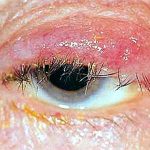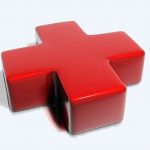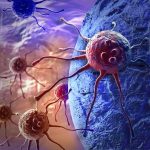Disease (болезнь) – a process that occurs as a result of effects on the malicious (emergency) stimulus external or internal environment, characterized by reduced adaptability of the living organism to the environment with simultaneous mobilization of its defenses. The disease manifests itself disequilibrium with the environment, are expressed in the occurrence of side (inadequate) reactions and a man – a decline to the illness of his disability.

The development of a common understanding of disease changed over the history of medicine. The ancient Greek physician and reformer of ancient medicine Hippocrates cause of the disease is considered misuse of mixing four basic body fluids: blood, phlegm, yellow and black bile (venous blood). Around the same time, based on the atomistic theory of ancient Greek materialist philosopher Democritus, the idea arose that the disease develops as a result of changes in the shape of atoms and their incorrect arrangement. At the end of the old and the beginning of a new era, and especially in the Middle Ages, idealistic views on the doctrine of the disease, according to which the soul or a special kind of life force (“Archean”), defines the struggle of the body to changes caused by boleznfmi.
Materialistic views on the disease in the Middle Ages developed by Ibn Sina (occurrence of the disease under the influence of invisible beings, the role of the constitution of the body). In the 17th – 19th centuries, a great contribution to the study of the disease have an Italian physician and anatomist Giovanni Battista Morgagni (the thought of illness due to anatomical changes in the organs), a French doctor, one of the founders of Pathological Anatomy and Histology, Marie Francois Xavier Bichat (description of the pathologic picture series diseases), the German pathologist Rudolf Virchow (theory of cellular pathology), C. Bernard (disease – a violation of physiological equilibrium with the environment) and other Russian therapist Sergei Petrovich Botkin, founder Viktor Pashutin Pathophysiology, Russian physiologist Ivan Petrovich Pavlov (Иван Петрович Павлов) and therapist Alexey Ostroumov disease associated with violation of the conditions of human existence and developed the idea of the disease on the basis of ideas nervism.
Despite the abundance of work on disease, the concept is still not precisely determined. Some authors deny the qualitative features of the disease as compared with health [ru]. Thus, the pathophysiology Alexander Bogomolets expressed the idea that the disease in the body does not produce anything really new. Others include the concept of a biological disease patterns. By PD Gorizontov’s disease is a common complex reaction that occurs as a result of violations of the relationship of the body and the environment. The disease is accompanied by the development of pathological processes from local manifestations of the general reaction of the body. In the writings of the Russian pathologist and founder of the scientific school of Hippolytus Vasilyevich Davydov upheld the provision that there is no fundamental difference between the physiology and pathology. Pathological processes and disease, in his opinion – it’s just a particular adaptive processes associated with subjective suffering. According to the concept of Canadian pathologist Hans Selye’s general adaptation syndrome, disease is stress (“stress”) that occurs in the body when exposed to extreme stimulus.
Causes of disease
Causes of disease are varied, but they can all be grouped under the mechanical, physical, chemical, biological, and for a man – and even psychogenic factors. Any of these factors is the state of the disease, if it is inadequate (ie, emergency, unusual) for the body. Inadequacy may be quantitative (amount of stimulus is excessive for the body), qualitative (the body is influenced by factors in relation to the quality of which is not produced in the body protective-adaptive mechanisms), temporary (quantitatively and qualitatively adequate stimulus affects long-term or at such intervals and in this rhythm, which are unusual for the body) and depending on the individual properties of the organism (ie, defined by individual reactivity of the organism in the form of increased sensitivity).
In today’s presentation of the disease is characterized by the following main features:
- 1. In the development of the disease plays a major role the external environment, and for the people – primarily social. Changes in the intrinsic properties of the body caused by environmental factors and firmly fixed (including and hereditary mechanisms), hereinafter themselves can play a leading role in the development of disease (see Medical Genetics).
- 2. Important in the development of disease than the etiological factor (that is, the causes of the disease) and external conditions are protective and adaptive mechanisms of the body. Development of diseases largely depends on the perfection of these mechanisms, the volume and speed of their inclusion in the disease process. The man on the development and course of disease is greatly influenced by psychogenic factors.
- 3. Disease – the suffering of the whole organism. There is a completely isolated diseased organs and tissues, as the local disease. With any disease to a greater or lesser extent, involved the entire body, which does not exclude the presence of the primary lesion in a particular organ or body part.
Distinguish the following periods of the disease: hidden, or latent (for infectious diseases – the incubation), – the period between the beginning of the impact of the pathogenic agent and the appearance of the first symptoms. It can last from a few seconds (for example, in cases of poisoning by strong poisons) to decades (eg, leprosy).
Prodromal period – the period of the first signs of the disease, which may be indefinite nonspecific (fever, fatigue, malaise), or in some cases, be representative of the disease (eg, stains Filatov – Koplik with measles). The period of full development of the disease, the duration of which varies from several days to dozens of years (tuberculosis, syphilis, leprosy).
Completion period of disease (recovery, convalescence) can occur quickly or gradually critically, analytically. Depending on the duration of the course and speed of the rise and disappearance of symptoms of diseases are acute and chronic joining the main manifestations of the disease additional changes not related to the immediate cause of the disease, but developing as a result of its flow is called a complication. It can occur in the midst of sickness and minovanii main manifestations. Complications aggravate illness, and sometimes can become a cause of adverse outcome. Outcome of the disease may include: complete recovery, recovery with residual or persistent change in organs, sometimes the emergence of new forms of the disease in the form of long-term effects, and death. Death as the end of the disease may occur suddenly, after a brief agony or gradually, through a more or less prolonged agonal state.
Classification of human diseases carried by the nature of the flow (acute and chronic diseases), and the level at which the body identifies specific pathological changes in disease (molecular, chromosomal, cellular and tissue, organ, disease of the whole organism), and etiological factor (disease caused by mechanical, physical, chemical, biological or psychogenic factors), and the method of treatment (medical, surgical, etc.), by age or gender differences (women, children), etc.
The most accepted is the nosological principle, that is, a classification of the disease, which is based on the grouping of diseases on related grounds. It should be noted that none of the existing classifications of disease is not fully satisfactory. Thus, when classification nosological principle pneumonia, for example, can be attributed to diseases of the respiratory system, to infectious diseases and allergic conditions. Therefore the creation of the modern classification of the disease is the most important task of theoretical and practical medicine.









